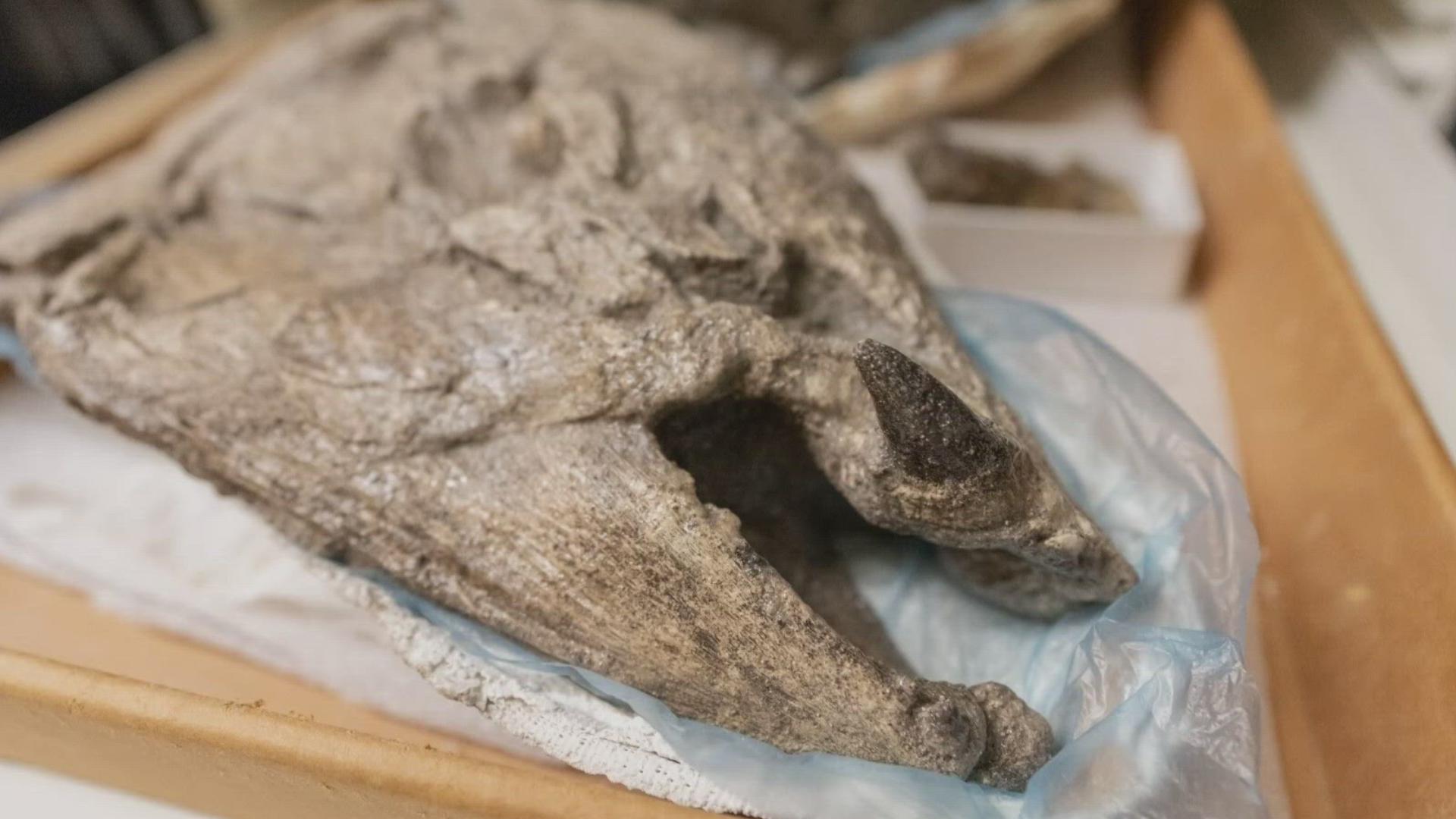PORTLAND, Ore. — If you look at pictures of salmon from the prehistoric era, you'll often see them with protruding teeth that pointed downward. But now, research shows that wasn't true.
"The previous scientists had figured that these big teeth had looked like a saber-toothed cat, but the new specimens that we found are intact, and the teeth don't point down like a saber-toothed cat does but out to the side like a warthog," said University of Oregon associate professor Edward Davis.
The giant salmon grew to almost 8-and-a-half feet and lived five million years ago in Oregon. Researchers believe the spiked teeth on the fossils were about two inches long and slightly curved. Scientists say they were important to reproduction.
"Now that we know they pointed to the side, we think the teeth were there probably for fighting for space to reproduce," said Davis.
The fossils were found on private land in Gateway, Oregon. It's a discovery that scientists say is a game-changer to understanding the origins of salmon.
"These ancient salmon that lived in that warm ocean five million years ago were actually filter feeding, and I think that's why they got to be so big, " said Davis.
The extinct salmon from Central Oregon were the largest of its kind to ever live. Scientists say the research will help to gain more insight into modern ecosystems in the Pacific Northwest and that prehistoric salmon actually had spiked teeth that pointed downward will also help with future studies.
Download the KGW News app: Download for iPhone here | Download for Android here
Stream newscasts for free on KGW+ on Roku, Amazon Fire and Apple TV: How to add app to your device here
See a typo in this article? Email web@kgw.com for corrections.

